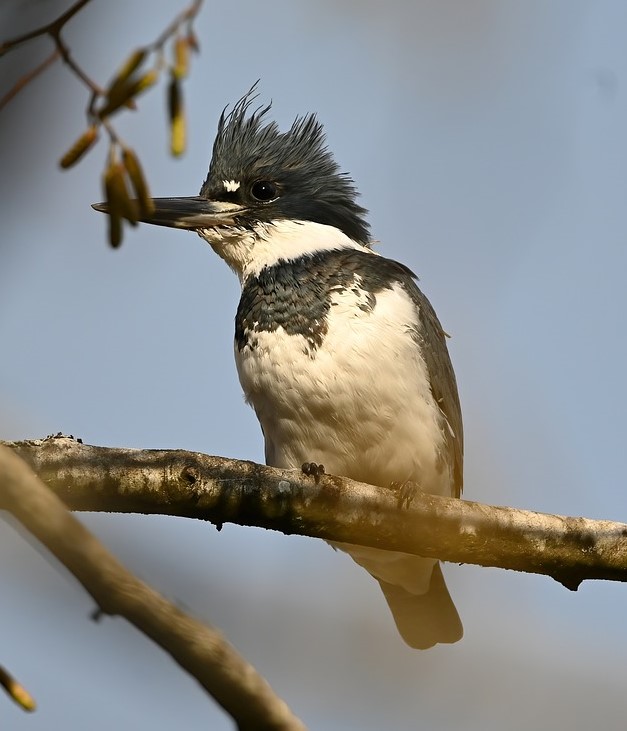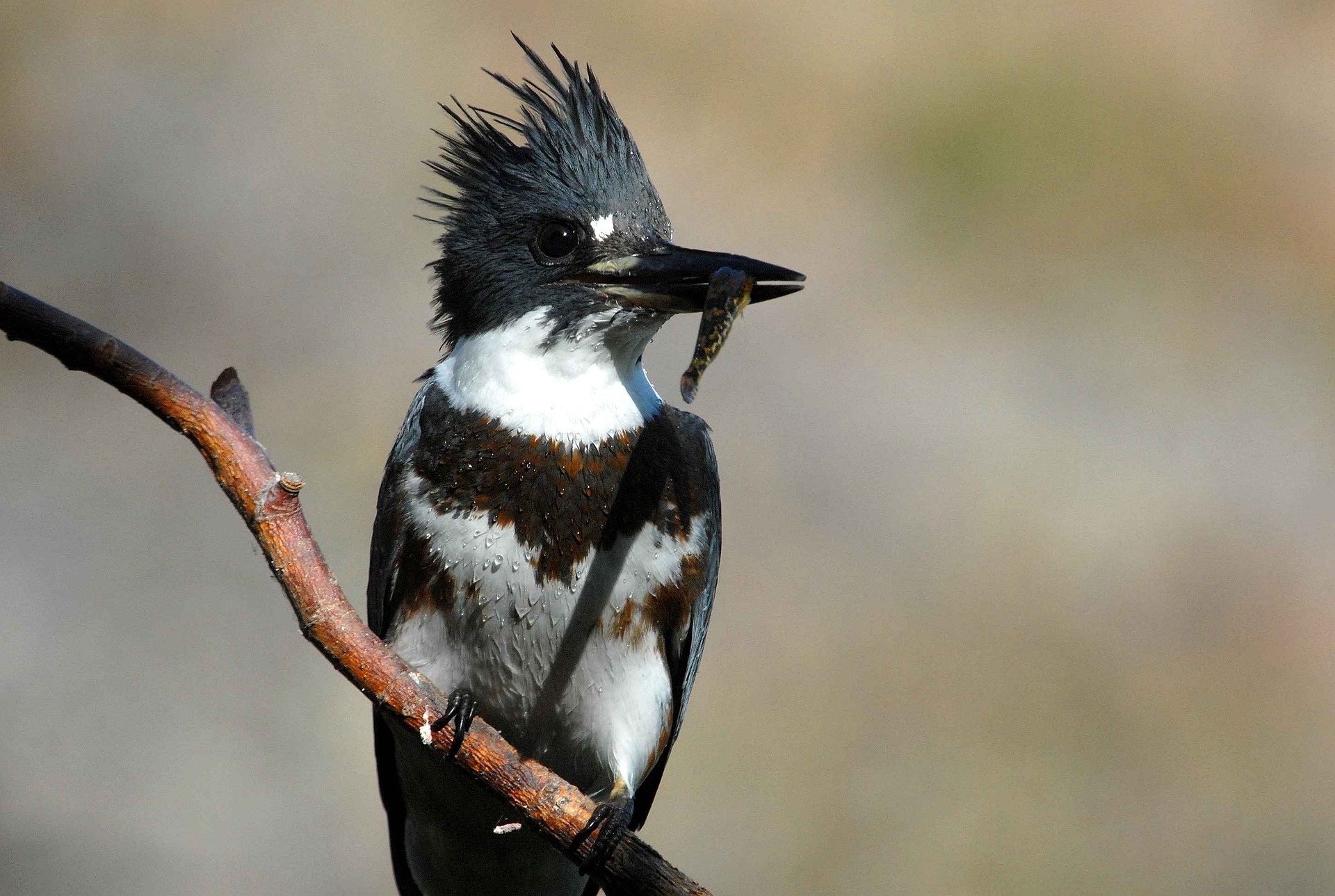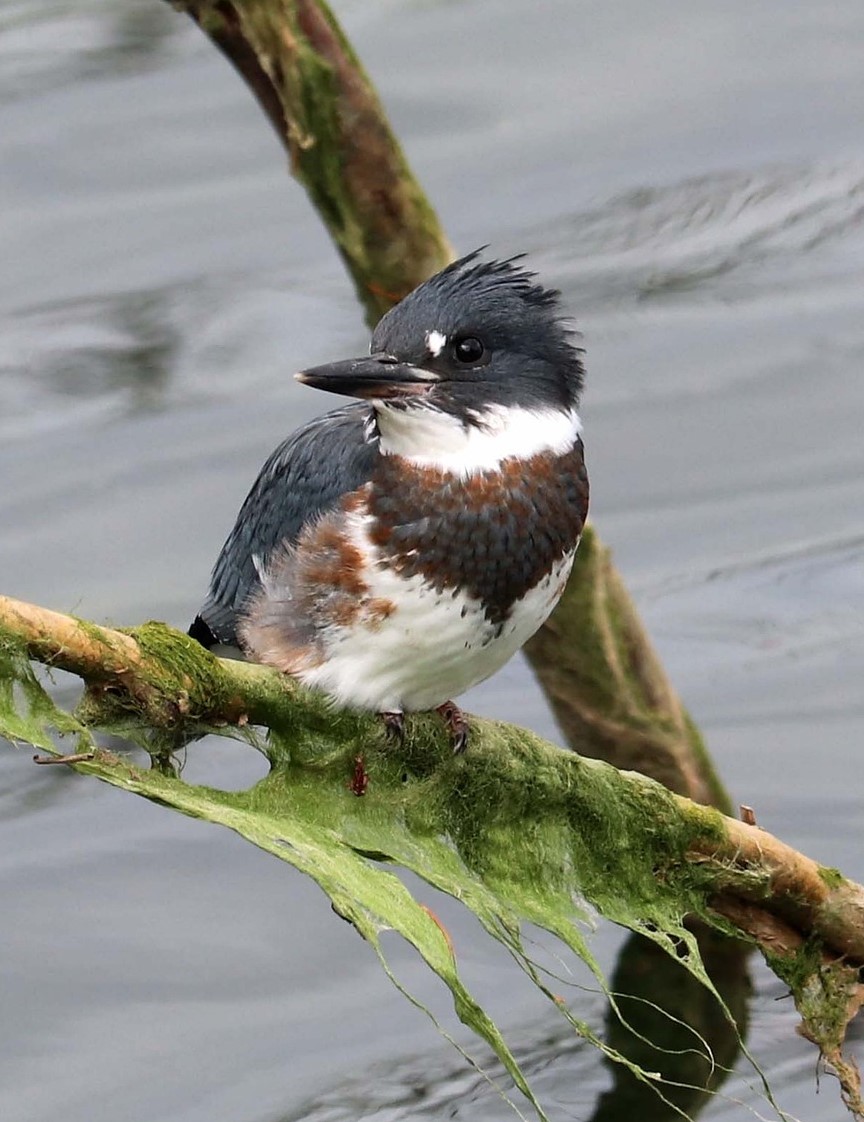2023 Bird of the Year announced!
On December 10, 2022 the American Birding Association announced that the 2023 Bird of the Year is a female belted kingfisher! Watch the reveal of this coming year’s bird dedication ceremony and the unveiling of the art work created by the Bird of the Year artist, Liz Clayton Fuller.
Belted Kingfisher (Megaceryle alcyon)

Belted kingfishers are unmistakable when seen perching on wires or branches near their freshwater dining locations. Their hovering flight with rapid wing beats as they search for food near waterways before plunging head first to spear their prey with their bill is also a telltale characteristic. These slate grey birds are about the size of a robin, but are stocky with a large head crowned with a shaggy crest of feathers, a thick bill, and have a short tail and short legs. White bands can be seen on their wings and tails when in flight. Males have a slate grey-blue band on their breasts. Females are similar in size and coloration, but also have a rust-colored band across their belly. Juveniles will have rusty spotting around belly and chest.

They snack on a diet almost entirely of fish but will also eat a variety of tasty treats such as crayfish, shellfish, insects, frogs, snakes and lizards, and even a small bird or mammal or berries! Generally hunting from a perch above the water or hovering in the air, the kingfisher will dive and grab its prey, landing back on its perch to pound it against its landing before swallowing it whole.
Belted kingfishers are year-round residents in most of the United States, including North and Central Florida. A bit further south of us and throughout the southwest, these beautiful birds migrate from Canada and the northern states to spend the cold winter months where the waters that provide them food do not freeze.
Fun Facts:

Kingfishers dig a burrow to nest in the vertical banks of streams and will even nest in man-made sand and gravel pits. The burrow can be 3-6 feet long with a nesting chamber at the end!
One of the few birds where the female has more showy coloration than the male!
As young birds, belted kingfishers can digest the skeletons and exoskeletons of their prey, but as adults their physiology changes and they must regurgitate those bits up as a pellet, just like owls! Read more about owls here.
Beware, kingfishers may visit your backyard pond to consume fish you may have there!
According to The Cornell Lab All About Birds the oldest known fossil of this bird was found right here in Alachua County, Florida 600,000 years ago!
Learn more:

One of the best way to learn about birds is to watch them in their natural habitat! Check out our Sarasota County Parks, Recreation, and Natural Resources natural areas preserves and your local Sarasota Audubon Society and Venice Area Audubon Society locations as both are near bodies of water where you might find a belted kingfisher looking for its next meal! You can often see them in neighborhoods perched on wires near backyard ponds or roadside ditches or even near the beach!
Want to learn more about the birds and other wildlife in Sarasota County, Florida? Check out our Florida Wildlife webpage with links to webinars, blogs, and other resources!
The Cornell Lab All About Birds website is an amazing treasure trove of birding information!
Read all our Wild Sarasota blogs here
 1
1
